Exploring Popular POS Systems in Retail
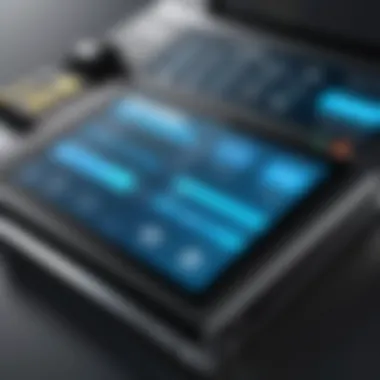
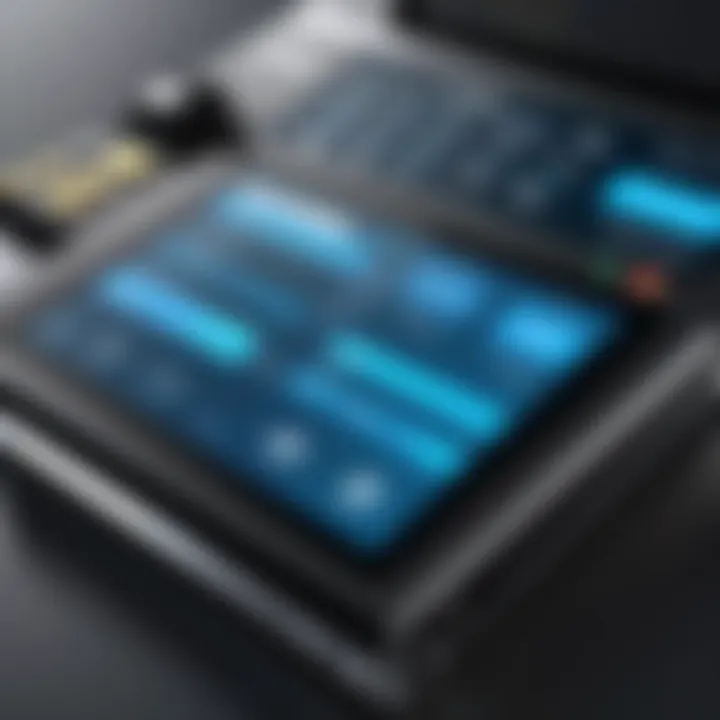
Intro
The point-of-sale system has evolved significantly over recent years, becoming an essential tool for retail businesses. These systems serve more than just a transaction process. They encapsulate a range of functionalities that aim to improve efficiency, customer interactions, and overall business operations. Understanding various POS systems in the market allows retail professionals to make informed decisions that can lead to significant enhancements in their operational activities.
The following sections will explore key aspects of popular POS systems, covering their purpose, features, performance analysis, and user experience. This narrative aims to demystify the technicalities behind these systems and how they can best serve the needs of retailers.
Overview of Software
Purpose and Use Cases
The primary role of a POS system is to enable sales transactions between businesses and customers. However, the scope extends beyond mere sales. Retailers utilize these systems for inventory management, sales reporting, customer relationship management, and even employee management. Broadly, the use cases include:
- Retail Checkout: Facilitating transactions with multiple payment options.
- Inventory Tracking: Keeping a real-time count of stock levels and automating reordering when necessary.
- Sales Analytics: Generating reports to analyze sales trends over time to optimize marketing strategies.
- Employee Management: Tracking employee hours and performance metrics.
Key Features
When evaluating POS systems, several key features stand out as crucial for retail operations:
- User-Friendly Interface: Simple designs help quick employee onboarding and reduce users’ error rates.
- Integration with E-commerce: They should seamlessly connect with online platforms like Shopify and Amazon for a unified experience.
- Mobile Compatibility: A mobile-friendly design allows sales transactions to happen anywhere in the store.
- Customer Support: 24/7 support can be beneficial in solving critical issues instantly.
- Security Features: PCI compliance and customer data protection are vital for maintaining trust.
"An effective POS system not only simplifies the transaction process but also enhances the overall retail experience for both staff and customers."
In-Depth Review
Performance Analysis
An effective POS system must demonstrate robust performance metrics: reliability, speed, and minimal downtime are essential. Users should measure performance through the rate of transaction processing and responsiveness during peak hours. Performance benchmarks help retailers assess whether their system meets operational demands.
User Interface and Experience
A clean user interface contributes significantly to user experience. The system's layout should be intuitive, allowing quick navigation through different functionalities. Features like digital receipts, loyalty programs, and prompt customer feedback mechanisms improve user satisfaction. Regular updates to the UI can ensure that the software remains modern and user-friendly.
Prelims to POS Systems
Point-of-sale (POS) systems are essential components of modern retail environments. They serve not just as transaction facilitators, but also as comprehensive tools that optimize many aspects of business operations. Understanding the fundamentals of POS systems is critical for any retail business aiming to enhance efficiency and provide superior customer service. This exploration highlights various POS systems available in the retail sector, along with their implications for operational success.
Definition of POS Systems
A point-of-sale system is essentially the hardware and software that enables businesses to process customer transactions. At its core, a POS system captures sales data, manages inventory, and facilitates customer interactions. The components of a POS system typically include a computer or tablet, a cash register or drawer, a card reader for handling credit or debit transactions, and a receipt printer.
Many modern POS systems also offer additional features such as inventory management, sales tracking, and customer relationship management. These functionalities allow businesses to analyze sales trends and customer preferences, further informing marketing strategies and inventory management decisions.
Importance in Retail Operations
In the retail sector, the efficiency of operations can significantly impact profitability and customer satisfaction. POS systems streamline the checkout process, reducing wait times and improving the customer experience. Additionally, accurate sales tracking helps businesses maintain optimal stock levels, reducing the risk of overstocking or running out of key products.
Key benefits of implementing a robust POS system include:
- Enhanced Efficiency: Transactions are processed quickly, enabling staff to assist more customers in less time.
- Improved Accuracy: Automation reduces human error in sales data entry and inventory management.
- Data Insights: Analyzing sales data can inform strategic decisions, from marketing campaigns to product placement.
"POS systems are not just checkout tools; they are valuable in managing overall business performance."
Criteria for Selecting a POS System
Choosing the right point-of-sale (POS) system is crucial for any retail operation. It can significantly affect workflow, customer satisfaction, and ultimately, profitability. Therefore, understanding the criteria for selecting a POS system is essential for making an informed decision. Companies need to evaluate systems based on several important elements. This not only helps streamline operations but also supports scaling and improvements in user experience.
Scalability and Flexibility
A POS system must accommodate the needs of a growing business. Scalability means that the system can evolve with the company. This could include adding new features, supporting additional locations, or integrating with other software platforms. For larger retailers, choosing a POS that can handle multiple locations is essential.
Flexibility is similarly important. It allows customization based on the specific requirements of a retail environment. For instance, different retailers may need different functionalities. A boutique shop may require an inventory management system, while a large supermarket may prioritize customer data collection. The ability to adapt the POS system’s functionalities ensures it meets varied demands.
User Interface and Experience


User experience plays a significant role in the effectiveness of a POS system. A clean, intuitive interface enhances employee efficiency and reduces training time. Staff members should be able to process transactions rapidly without encountering technical difficulties.
Additionally, a responsive design can greatly assist in fast-paced retail environments. When selecting a POS, consider how often customers will interact with it. Self-service kiosks, for example, necessitate a user-friendly interface for consumer ease. The smoother the user experience, the more likely employees will deliver a seamless service to customers.
Cost Considerations
Cost is always a key factor when selecting any technology solution, including POS systems. Businesses must analyze both upfront costs and ongoing expenses. Initial costs can include purchasing hardware and software, while ongoing costs may involve transaction fees, maintenance, and support.
A thorough cost analysis involves comparing the total cost of ownership for different systems. This includes looking at possible hidden costs such as transaction fees or software updates that could impact the overall budget. Business owners should carefully weigh the benefits provided against the costs incurred to ensure a sound financial decision.
"Deciding on a POS system can have lasting implications on business operations and should not be taken lightly."
Finding the right POS system involves a careful evaluation of scalability, user experience, and cost. This will ensure that the selected system enhances operational efficiency and supports business growth.
Overview of Popular POS Systems
The overview of popular POS systems is crucial in understanding how these technologies can improve retail processes. With trade evolving dynamically, selecting a capable POS system has become imperative for retailers. POS systems are no longer merely transaction devices; they have transformed into comprehensive solutions that integrate various essential functions such as inventory management, customer engagement, and sales reporting.
This section will discuss several widely recognized POS systems in the market, such as Square POS, Shopify POS, Lightspeed POS, Clover POS, and Toast POS. Each of these systems offers unique features that cater to different business needs. Analyzing these systems helps retailers understand the landscape of available options and determine which POS system aligns simply with their operational objectives.
Square POS
Features and Benefits
Square POS is known for its simplicity and versatility. It provides a user-friendly interface that streamlines transaction processes. One significant aspect is its ability to integrate various payment methods like credit cards, Apple Pay, and Google Pay. Retailers appreciate this as it enhances customer satisfaction and speeds up transactions.
Another notable feature is its robust inventory management capabilities. Users can track stock levels and sales trends easily. This feature allows retailers to make data-driven decisions, helping to avoid stockouts or overstock situations.
Target Audience
The target audience for Square POS primarily includes small to medium-sized retailers. Startups and independent businesses benefit greatly from the ease of setup and the lack of upfront hardware costs. The system is also suitable for mobile businesses such as food trucks and pop-up shops.
Retaining its users is crucial; therefore, the Square team actively seeks feedback to enhance the user experience continuously. This responsiveness has helped establish a loyal customer base.
Pricing Structure
Square POS has a transparent pricing structure. It charges a flat fee per transaction, which is convenient for businesses to estimate their operating costs easily. This pricing model is beneficial for small retailers who prefer to avoid monthly fees. However, it is important to note that transaction fees can accumulate during high-volume sales periods, potentially affecting profit margins.
Shopify POS
Integration with E-commerce
Shopify POS stands out with its seamless integration with e-commerce platforms. This capability allows retailers to manage their online and offline sales effortlessly. It supports consistent inventory across both channels, thus reducing discrepancies.
The unique feature lies in its ability to sync sales data in real-time, enabling business owners to analyze performance metrics effectively. Merchants can optimize their operations by focusing on insights gathered from both e-commerce and physical stores.
Usability
The usability of Shopify POS is often praised for its intuitive design. The interface is easy to navigate, making employee training straightforward. This characteristic is crucial for businesses that frequently hire seasonal staff. A clean layout minimizes confusion, allowing employees to serve customers efficiently without extended interruptions.
Additional Features
Shopify POS offers various additional features, including customer management tools and integrations with numerous third-party applications. These options enhance the system’s capabilities. For instance, retailers can launch loyalty programs directly through the POS, fostering repeat business.
However, some users may find that the additional costs for specific integrations could increase overall expenses, which must be considered during selection.
Lightspeed POS
Industry-Specific Solutions
Lightspeed POS excels in providing industry-specific solutions. It caters to various sectors, including retail, restaurants, and gyms. This adaptability is valuable as it allows the system to meet specific needs unique to each industry, improving operational efficiency.
Discounts and promotions tailored to distinct businesses are also part of its offerings. This capability can significantly impact sales during peak seasons.
Reporting and Analytics
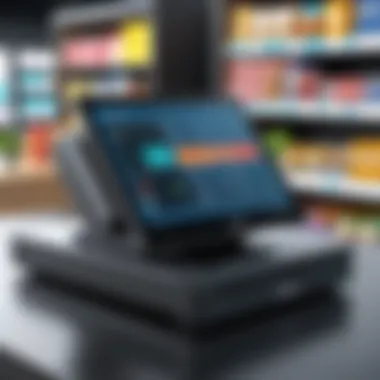
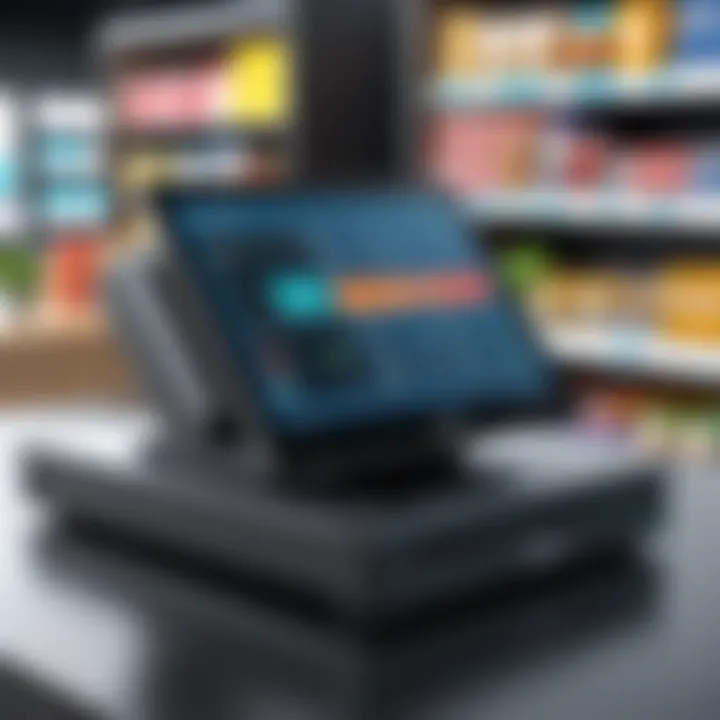
Lightspeed POS is equipped with advanced reporting and analytics features. Retailers can generate comprehensive sales reports, helping track performance over time. The insight derived from this data empowers businesses to adjust strategies efficiently.
The unique aspect is its ability to forecast trends based on historical data, aiding stock management and marketing efforts.
Customer Support
Customer support is another area where Lightspeed POS shines. They offer multiple channels, such as live chat, email, and phone support, ensuring assistance is readily available. This level of support is essential when systems face operational issues.
However, the responsiveness can vary, leading to some customers expressing frustration if issues are not resolved quickly.
Clover POS
Customizability
Clover POS is renowned for its high level of customizability. Businesses can select applications from a marketplace to enhance functionality according to their needs. This flexibility caters to a wide range of industries, making it a popular choice.
One potential downside is that some customizations can lead to increased costs, which might complicate budgeting for retailers.
Hardware Options
Clover offers diverse hardware options, allowing retailers to choose devices that best fit their operational style. Equipment like card readers, registers, and terminals provides full flexibility for different retail environments.
This range is particularly advantageous for businesses looking to scale over time. However, integrating various hardware can sometimes raise compatibility issues, which need careful consideration during implementation.
Fees and Charges
The fees associated with Clover POS can be somewhat complex. While it offers a range of plans, transaction fees can vary. Retailers must scrutinize the pricing model to avoid unforeseen costs as their business scales.
Toast POS
Focus on Food Service
Toast POS is uniquely focused on the food service industry. Its features are designed specifically for restaurants, bars, and cafes. With functionalities like table management and menu customization, it addresses the unique needs of food service establishments.
With its focus, Toast stands out in a crowded market, making it a favorite among restaurateurs.
Order and Payment Processing
The order and payment processing capabilities of Toast are optimized for speed and efficiency, critical in busy dining environments. The system minimizes wait times, enhancing customer satisfaction.
Being able to process orders quickly also aids kitchen efficiency, ensuring customers receive their food promptly.
User Feedback
User feedback is an integral part of Toast’s improvement. By continually seeking input from its retail clients, Toast evolves and adapts to meet the market’s changing needs. However, if changes are made often, some users may struggle with adapting to new features.
"Understanding these popular POS systems allows retailers to make informed decisions while selecting a system best for their operations."
Comparative Analysis of POS Systems
In today’s rapidly evolving retail landscape, a robust point-of-sale (POS) system is more than a mere transaction tool. It is a central hub for data collection, customer management, and inventory control. The comparative analysis of POS systems is crucial for retail business owners. This section outlines the different aspects that help evaluate the various POS options in the market. Understanding these aspects can lead to informed decision-making, ultimately enhancing operational efficiency and customer satisfaction.
Feature Comparison
When businesses look for a POS system, they focus on specific features that align with their operational needs. Features can range from simple transaction processing capabilities to more advanced offerings like inventory management, customer relationship management, and detailed analytics.
For example, Square POS offers a user-friendly interface with built-in inventory management. On the other hand, Clover POS allows customization tailored to specific business needs. A business in the food service industry may prioritize features such as table management and online ordering, which Toast POS excels at.
Here are several common features to consider:
- Inventory Management: Helps monitor stock levels and manage purchases.
- Customer Relationship Tools: Tools for tracking customer history and insights.
- Sales Reporting: Generates reports for better financial analysis.
- Payment Options: The ability to accept multiple forms of payment, including mobile payments.
The right features can significantly enhance business operations. Thus, examining features of each POS system helps in choosing the most suitable option.
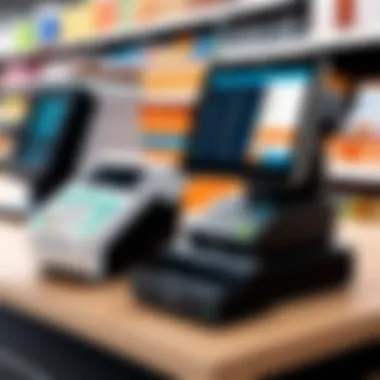
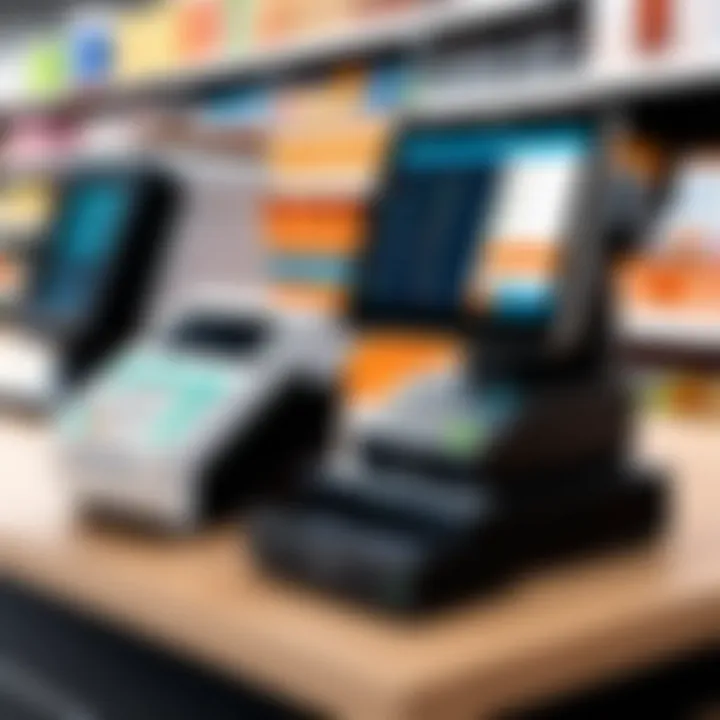
Cost Analysis
Cost is a pivotal factor in deciding which POS system to implement. Initially, businesses often look at the subscription fees or one-time costs associated with different systems. However, it is important to dig deeper into the total cost of ownership when comparing options. This includes hardware, transaction fees, and potential upgrade costs.
- Square POS operates on a transparent pricing structure with no monthly fees for basic features, making it affordable for small businesses.
- In contrast, Lightspeed POS generally charges a higher monthly fee but offers extensive features beneficial for larger retail operations.
- Hidden costs, such as credit card processing fees, can add up. For instance, Clover POS users should factor in transaction fees with each sale, which can impact the overall expenditures.
A detailed cost analysis helps businesses understand their long-term financial commitment to a POS system, ensuring sustainability and planning.
User Experience Review
User experience is an essential aspect when reviewing POS systems. It encompasses the ease of use, interface simplicity, and overall satisfaction of both staff and customers. A POS system can have cutting-edge features, but if it’s difficult to navigate, it won't benefit the users effectively.
For example, Shopify POS is recognized for its seamless integration with e-commerce platforms, leading to a consistent experience whether in-store or online. This attracts retailers who value efficiency. Conversely, Clover POS offers extensive customization; with its many options, the initial learning curve might be steep for employees.
When evaluating user experience, consider the following:
- Training Time: How long it takes for employees to become proficient.
- Accessibility: Mobile compatibility and cloud-based options for remote access.
- Customer Feedback: What actual users say about their experiences and any pain points they encounter.
In summary, a comprehensive review of user experience aids in selecting a POS system that not only meets business needs but is also easy for staff and customers to use.
"Comparative analysis of POS systems is not merely about features or cost; it is about aligning business goals with technology that facilitates growth and enhances customer experiences."
Evaluating these aspects systematically leads to a well-informed choice. The future of retail performance depends on selecting the right POS system, making comparative analysis a crucial part of the decision-making process.
The Future of POS Technology
The landscape of retail is continuously evolving. As it changes, so too must the point-of-sale systems that serve as the backbone for retail transactions. Understanding the future of POS technology is crucial for retailers who want to maintain competitive advantage and optimize operations. This section delves into the key areas shaping the next generation of POS systems and discusses their significance in the business environment.
Emerging Trends
Emerging trends in POS systems are largely influenced by advancements in technology. Here are some notable trends:
- Cloud-based Solutions: More retailers are leaning toward cloud-based systems. These systems offer businesses more flexibility regarding data access and storage. They allow for updates and integrations without the need for significant hardware investment.
- Integration with E-commerce: Retail businesses are increasingly looking for POS systems that integrate smoothly with their online platforms. This helps in synchronizing inventory and enhancing the customer experience across various channels.
- Contactless Payments: The rise of contactless payment options has changed consumer behavior. Systems now need to support NFC, RFID, and mobile wallets, improving transaction speed and safety.
These trends indicate a shift toward more versatile, user-friendly technologies.
Impact of Mobile Payments
Mobile payments have altered how consumers engage with retail. The ability to process transactions through mobile devices or applications provides several benefits:
- Convenience: Customers can make purchases anywhere at any time, which greatly enhances the shopping experience.
- Speed of Transactions: Mobile payments are often faster than traditional methods, allowing retailers to serve customers more quickly, thus improving sale volume during peak hours.
- Increased Sales: Retailers benefit from upselling opportunities through mobile applications, encouraging consumers to make on-the-spot purchases rather than delaying decisions.
In summary, mobile payments are essential to modern POS systems, shaping how retailers interact with their customers.
Role of Data Analytics
Data analytics plays a pivotal role in enhancing the functionality of POS systems. Through effective data utilization, retailers can achieve several objectives:
- Customer Insights: Analyzing purchasing behavior helps in understanding individual customer preferences. This data can be utilized for targeted marketing efforts.
- Inventory Management: Retailers can analyze data trends to maintain optimal inventory levels, reducing excess stock and potential losses.
- Performance Monitoring: Retailers can evaluate which products are performing well and which need attention or discontinuation. This proactive approach helps in strategic planning and resource allocation.
By leveraging data analytics, businesses can not only improve their decision-making processes but also enhance operational efficiency and customer satisfaction.
Epilogue
Conclusion is essential in understanding the implications of choosing the right POS system for a retail business. The narrative throughout this article illustrates that a well-selected POS system is not merely a technical tool; it is a backbone that supports and enhances operational efficiency. A sound POS system can lead to increased sales, improved customer interactions, and streamlined processes.
Summary of Key Insights
Several key insights emerge from this exploration:
- Diverse Options: The variety of POS systems available caters to different retail needs, whether targeting small businesses or larger enterprises. Systems such as Square POS and Shopify POS provide unique features beneficial for e-commerce and physical stores alike.
- Cost-Benefit Analysis: Cost considerations play a pivotal role in the selection process. It is imperative to analyze the total cost of ownership, which includes not only the purchase price but also maintenance and upgrade expenses.
- User Experience Matters: A user-friendly interface is critical for ensuring that employees can operate the system efficiently. Training time and usability can impact overall productivity.
- Future Trends: Observing the emerging trends in POS technology, such as mobile payment solutions and data analytics, helps businesses stay competitive. These trends can be instrumental in improving customer satisfaction and sales.
"Selecting the appropriate POS system is a strategic decision that goes beyond mere functionality—it shapes the future of retail experiences."
Final Thoughts on Selection Criteria
When selecting a POS system, several criteria should be prioritized:
- Functional Fit: Businesses must evaluate their specific needs. A system suitable for a restaurant like Toast POS may not work for a retail store relying on Shopify POS.
- Scalability: As a business grows, its POS needs may change. It is crucial to choose a system that can adapt and scale, avoiding future disruptions.
- Integration Capabilities: Ensure that the POS system can integrate seamlessly with various payment gateways and other business tools, such as accounting software.
- Support and Resources: Adequate customer support and training resources are necessary to maximize the benefits of the system.
In summary, selecting the ideal POS system demands careful consideration of features, costs, and long-term goals. By analyzing the insights discussed, business owners will be better equipped to make informed decisions that enhance operational efficiency and improve customer experiences.







